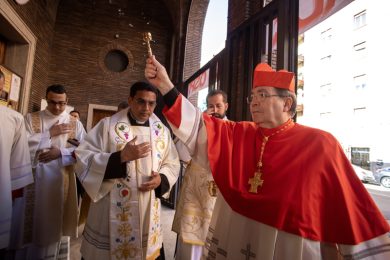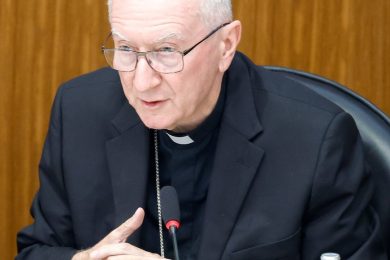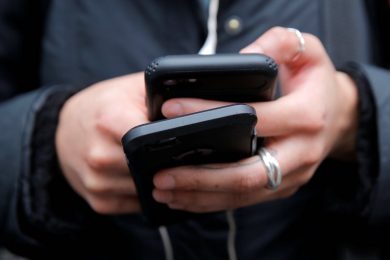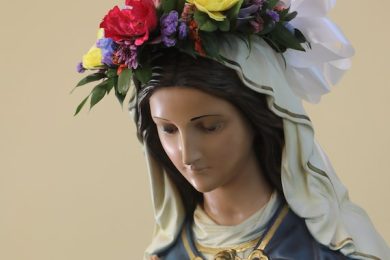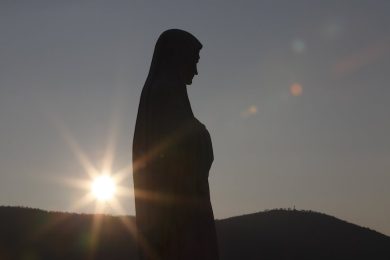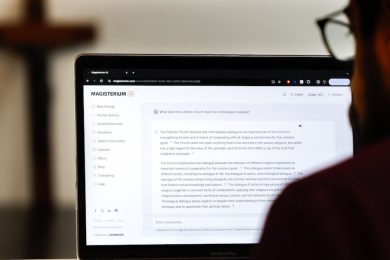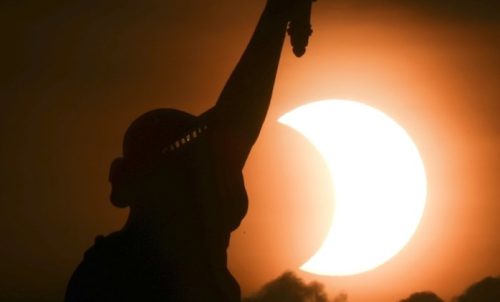By Mike Latona, OSV News
ROCHESTER, N.Y. (OSV News) — An astronomy buff since childhood, Father Robert Schrader anticipates quite a birthday present when he turns 75 April 8.
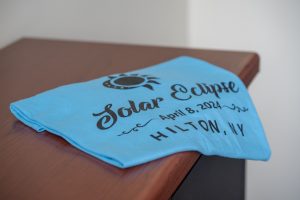
It’s a gift in which hundreds of thousands of people will share: the first total solar eclipse in the Rochester/Finger Lakes area in nearly a century.
On that Monday afternoon, the moon will pass directly between the Earth and the sun. More than half of the Rochester Diocese is situated in the eclipse’s 115-mile-wide “path of totality.” That’s where the moon will completely block the face of the sun, resulting in a short period of rare daytime darkness.
Since the path of totality is so narrow, up to half a million visitors are expected to travel to this region, according to Monroe County’s website. Many will take part in social and scientific events. Yet Father Schrader said the eclipse offers spiritual enlightenment for viewers as well.
“The universe is very ordered. You just have quite an experience of God’s creation of the universe and how the sun, the moon and the Earth are working together that day to make for an eclipse,” said Father Schrader, a senior diocesan priest.
“It’s a way to pray — it’s a way to engage with God’s creation, the work of God’s hands,” agreed Michelle Francl-Donnay, who will give an eclipse-themed retreat, “The Heavens Declare the Glory of God,” April 5-6 at Canandaigua’s Notre Dame Retreat House. Francl-Donnay is an adjunct scholar with the Vatican Observatory, which specializes in astronomy-related research and education and is supported by the Holy See.
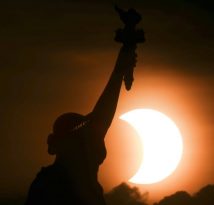
According to the Rochester Museum and Science Center’s eclipse website, the last total solar eclipse to be visible locally was in 1925, and the next one won’t be until 2144 — some 120 years from now. The website of the National Aeronautics and Space Administration notes that the most recent North American total solar eclipse was in 2017, with the next due to occur in 2044.
“Total eclipses are not all that rare. It’s just most of the time they happen over oceans, where nobody is,” Francl-Donnay noted.
On April 8, the eclipse’s path of totality will enter this country in Texas, curving northeast and crossing most of the Rochester Diocese’s 12 counties before exiting the U.S. in Maine.
NASA’s interactive online map shows that the city of Rochester will experience the eclipse from 2:07 to 4:33 p.m., with totality occurring for 3 minutes and 42 seconds beginning at 3:20 p.m. Meanwhile, Brockport — which has the rare distinction of being at the center of totality — will have 3 minutes and 44 seconds of totality beginning at 3:19 p.m. Penn Yan — near the totality line’s edge — will have only 37 seconds of totality beginning at approximately 3:22 p.m.
Although not on the path of totality, other parts of the diocese also will grow quite dark: Ithaca and Elmira will experience peak coverage of 99.2% and 98.5% of the sun, respectively, at 3:08 p.m. Elsewhere in the United States, Chicago will have a peak coverage of 93.9%; New York City, 89.6%; and Los Angeles, 48.6%.
NASA noted that other notable phenomena during totality will be a drop in air temperature of approximately 10 degrees; confusion among wildlife as nocturnal animals wake up and others think it’s time to go to sleep; a darkened sky even if the day already is quite cloudy; and visibility of stars and planets if the sky is clear.
NASA emphasized that while protective eyewear may safely be removed during the period of totality, it should be used for all other stages of the eclipse.
Its location on the path of totality makes Monroe and surrounding counties prime viewing territory for observers from all over the northeastern U.S. As such, a full slate of festivals, concerts, lectures and parties are scheduled across the region.
Among them are events at Rochester’s St. Monica Church and Henrietta’s St. Marianne Cope Parish, as well as the motherhouse of the Sisters of St. Joseph, which is among several local organizations serving as eclipse community ambassadors. Some local parishes also have sold or given away eclipse sunglasses, and at Hilton’s St. Leo Parish, the Knights of Columbus has been selling commemorative T-shirts.
Meanwhile, area officials have issued advisories regarding traffic, parking and crowds. All local schools — and many workplaces — will be closed April 8. In fact, two diocesan churches nearly at the center of totality — Brockport’s Nativity of the Blessed Virgin Mary as well as St. Leo — will be closed as well. Father Joseph Marcoux, pastor of Nativity, and Deacon Jose Rivera, St. Leo’s parish deacon, said holding eclipse events at those churches could prove difficult due to potential gridlock caused by people wishing to be as close to the center line as possible.
Father Schrader acknowledged that the expected flood of visitors invites comparison to the 1969 Woodstock rock-music festival in Bethel, New York. The concert, which he attended as a college student, drew an estimated 400,000 people.
“Creedence Clearwater Revival will not be playing on that day (April 8), and hopefully there will be less mud to wallow in,” he quipped, referring to the historic, rain-soaked Woodstock event.
Father Schrader said he’s excited for the total solar eclipse to make local history, having been present for an annular eclipse in Utah in October 2023 during which the moon covered all but a small portion of the sun’s view. He also attended a faith and astronomy workshop at the Vatican Observatory’s Arizona facility in 2016.
Amid all the hoopla surrounding April 8, Francl-Donnay — who said she’s never witnessed a total solar eclipse — plans “not only to enjoy the eclipse just as a scientific phenomenon, but also to sort of enjoy the beauty of the kind of celestial mechanics that lead to this, and to kind of appreciate God’s role in setting the universe in play.”
Francl-Donnay, a Catholic who resides in the Archdiocese of Philadelphia, also is a chemistry professor at Bryn Mawr College. Although many people currently think faith is incompatible with science, she said she believes that “they’re linked together in very strong ways,” with the April 8 eclipse serving as a vivid reminder.
“I think we sometimes underestimate our need for experiences that disquiet us in some ways, that get us thinking, get us moving, get us wondering about God at work in the world,” she said.





